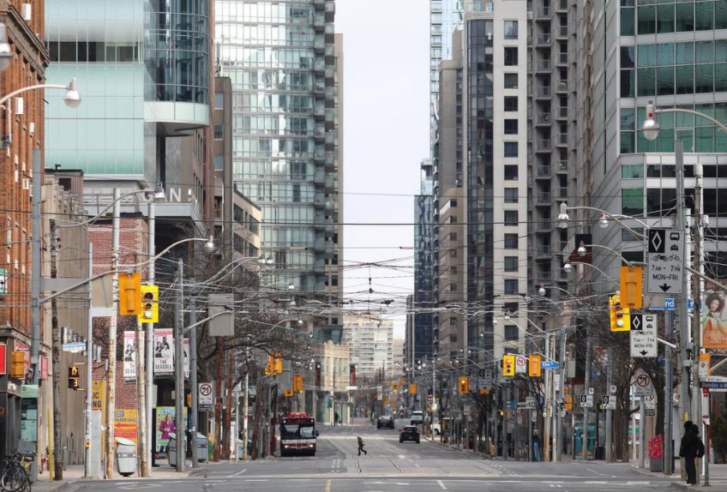It’s the subject of endless speculation and discussion — when will people go back to work. But a new gauge of downtown foot traffic shows that Toronto is trailing most North American cities when it comes to returning to the office.
Among six Canadian cities, only Ottawa lags Toronto in terms of downtown business traffic. That is according to a new Vitality Index, developed by commercial real estate company Avison Young. It shows foot traffic in Toronto is still 85.8 per cent lower on average than it was before the pandemic. Ottawa is down 89.6 per cent in the same period.
Toronto’s office activity ranked 18th among 23 North American cities. Only Silicon Valley, East Bay/Oakland, Calif., and Miami, as well as Ottawa, had lower office attendance last week.

Three Canadian cities — Calgary, Edmonton and Vancouver — were among the five centres showing the highest office occupancy. Boston, down about 55 per cent from pre-pandemic levels, was first. Austin, Tex., rounded out the top five.
Avison Young officials wouldn’t speculate on when Torontonians would head back to the office. How cities are faring depends on government pandemic regulations, vaccination rates and the industrial base of a city, said New York-based executive director Craig Leibowitz.
When we do go back it will be a new world of hybrid work, said Sheila Botting, the company’s president of professional services for the Americas. She said there will be a period of transition for downtown businesses and buildings.
“Given we’re behind the U.S. and we’re not at 50 per cent (office occupancy), I think it’s going to be a slow walk forward,” she said.
But Botting, who is based in Toronto, added that, “Downtown Toronto and downtown any city — the buzz, the action, the vibrancy will return.”
Toronto office vacancies have risen to a record 7.3 per cent in this year’s second quarter. That is compared to 2.5 per cent in the second quarter of 2020, according to Avison Young. But space available for sublet, 32 per cent of the city’s available office space, fell in this year’s second quarter for the first time in six quarters.
“Sublease space in the market has gone up because large corporate tenants are saying, ‘We don’t need the space any more. Nobody’s in it.’ There will always be a need for space. Those spaces will be used again. It’s just the purpose of those spaces will be different,” said Botting.
She said Toronto is well positioned to weather the transition because many of its downtown towers are owned by pension funds that can withstand the change.
“The challenges come with the smaller properties, the smaller businesses and that’s why there’s been so much attention by the commercial real estate industry and the various levels of government to be able to subsidize rents, to be able to help with various employment issues,” she said.
The index is designed to provide transparency around the return-to-work question which has broad economic and office implications, Leibowitz said.
Based on anonymized cellphone data at about 15 key downtown locations, the index compares foot traffic in Canada to the week of March 2, 2020, just before the first pandemic shutdown. Labour Day 2019 is the reference point for U.S. cities.
The index also measures how much individual industries are drawing employees back to the office. It shows that among eight industries in Toronto, telecoms are seeing the highest rate of return to the office — down about 67 per cent since the pandemic — followed by consulting (69.2 per cent). Hospitality and tourism, insurance and the technology industries remain at the bottom of the ranking.
Toronto’s Strategic Regional Research Alliance (SRRA), which also measures downtown office occupancy, showed that offices were 9 per cent occupied the week of Sept. 1, up a percentage point from the week of Aug. 15.
Since May 1, 2020, the SRRA’s Occupancy Index showed the highest office occupancy of 10 per cent was the week of Sept. 15 last year.
Article From: The Star
Author: Tess Kalinowski

